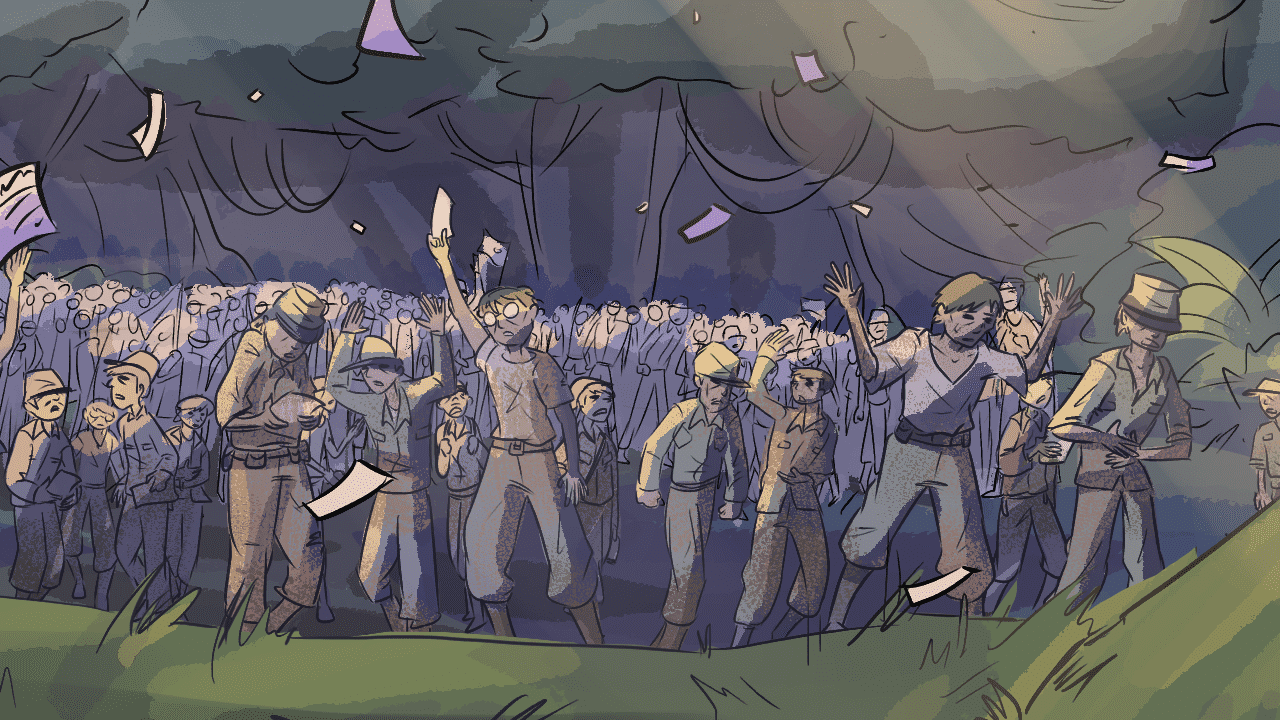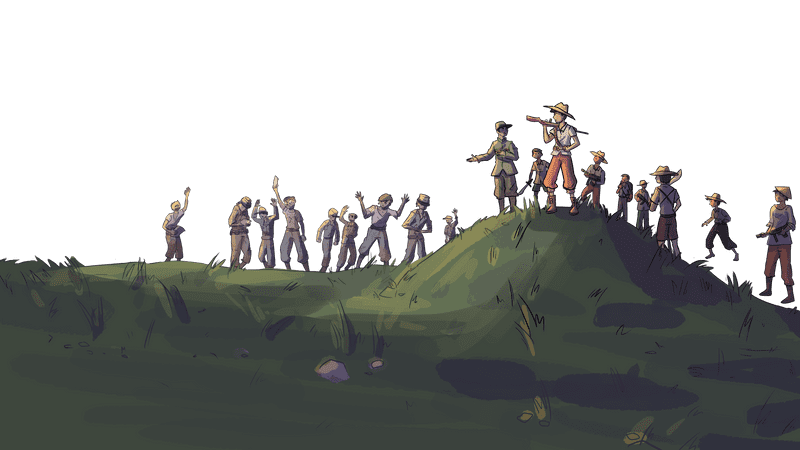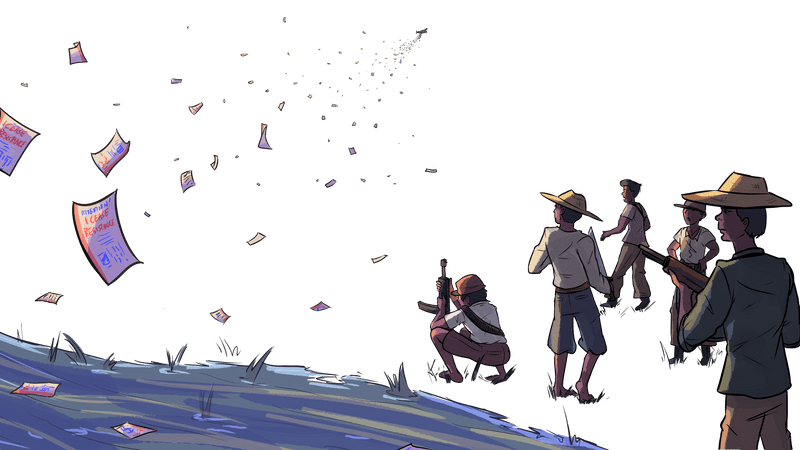Chapter Two: The Crucible of War
October, 1944 – September, 1945
Devastation and Victory
In the months after the U.S. military landings, Filipinos experienced some of the most brutal fighting of WWII.
In the six months that followed the U.S. military landings at Leyte in October 1944, Filipinos experienced some of the most brutal fighting of the Second World War. U.S. bombers hit cities, towns, and Japanese military installations. Artillery shelling destroyed roads, bridges, and farms as American forces invaded from the north and the south.
Survivors of the battle of Manila describe the brutality and devastation of battle.
An Untold Triumph: America's Filipino Soldiers
Filipino guerrillas, emerging from rural jungles and urban attics, joined with American GIs to fight a determined enemy. Shoulder to shoulder under the American flag, they fought together to defeat Japan and liberate the U.S. colony of the Philippines.
Nowhere was the devastation greater than the capital city of Manila. U.S. bombing and house-to-house fighting caught innocents in the crossfire, killing nearly 100,000 civilians. As Japanese soldiers retreated in February 1945, they committed atrocities. But most of the destruction came from U.S. bombs.
“As troops enter villages, they are confronted with unimaginable casualties and atrocities.”
An Untold Triumph: America's Filipino Soldiers
Soon, Philippine Commonwealth President Sergio Osmeña returned to his office in a bombed-out government building and General Douglas MacArthur found his personal suite at the Manila Hotel looted and damaged. Although General Dwight Eisenhower did not visit the region immediately after the war, he noted that “only Warsaw” experienced devastation as great as Manila. The Philippines experienced more widespread devastation than almost any other country during World War II.
Fighting continued for months. American and Filipino soldiers captured military targets, liberated civilian internees at Santo Tomas, and carried out a “Great Raid” to rescue POWs at the Cabanatuan prison camp. Hundreds of thousands of U.S. service personnel—including several thousand who served in the First and Second Fil—set up camp in the Philippines.
From there they prepared for an expected land invasion of the home islands of Japan. After the U.S. dropped atomic bombs at Hiroshima and Nagasaki in August 1945, that invasion was called off.
Surrender Party
Japanese soldiers withdrew, surrendered, or were captured. A handful would hide in Philippine jungles for decades. Japan’s commanding officer in the Philippines, General Yamashita Tomoyuki, surrendered at a hideout in the mountain city of Baguio. Japan surrendered at a formal ceremony aboard the USS Missouri on September 2, 1945.
For ordinary Filipinos who had endured nearly four years of war, the ceremony brought a sense of relief. But it also left many questions unanswered: America had a new president, Harry Truman. Would he honor Franklin Roosevelt’s promise that Filipinos’ “freedom will be redeemed and their independence established and protected”? Would the U.S. government fulfill its promises of citizenship and benefits? And what would be the future of the new nation?
Would the U.S. Government fulfill its promises of citizenship and benefits?
Next Section
July 6, 1946
Independence Day
The promise of independence first made by the U.S. in 1916 was finally fulfilled.
Explore



